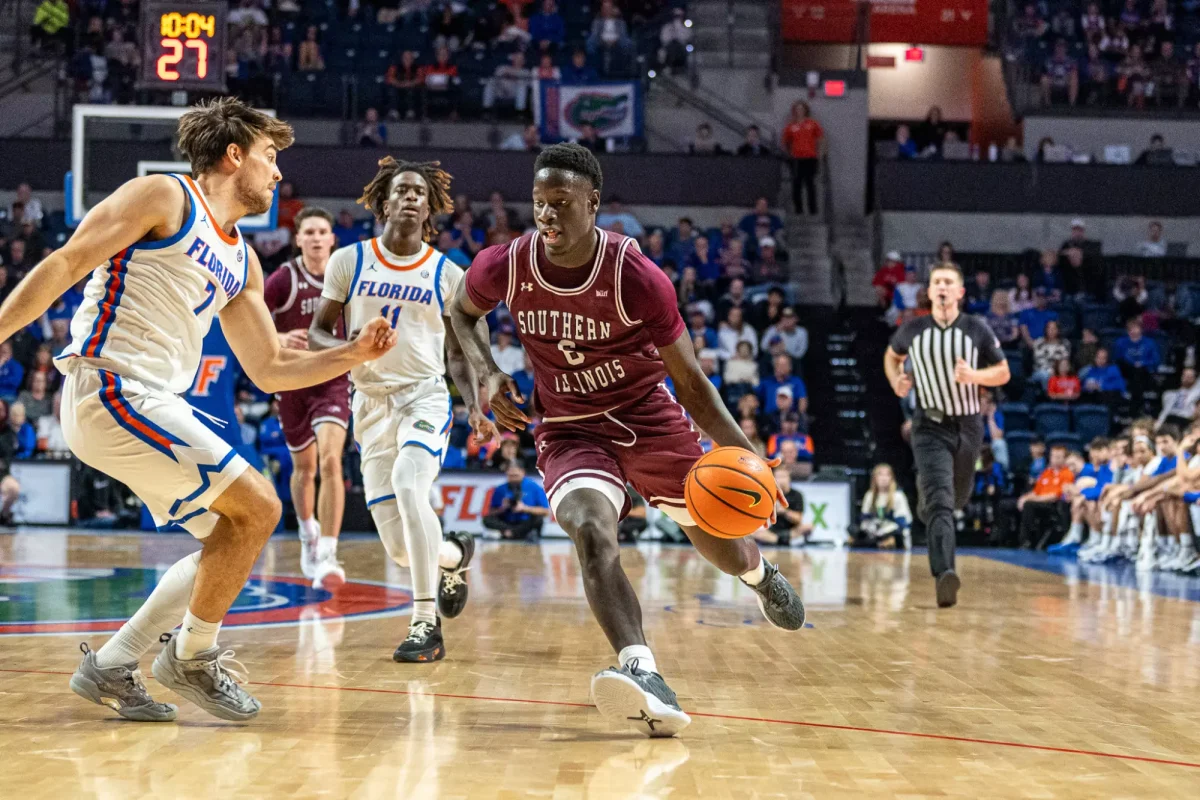Degree programs won’t change with a potential College of Science merger, administration says
July 20, 2017
University administration said degree programs will not change once an academic college — potentially the College of Science — is dissolved from existing as a standalone entity.
On July 13, the SIU Board of Trustees approved the Financial Stability Plan, which requires the university to reduce the number of academic colleges by one by July 1, 2018.
While this means any college at the university could be dissolved, the plan states university administration is currently considering dissolving the College of Science into one or more other colleges.
Advertisement
The plan mentions two ways such a dissolution could occur, though university administration said these are only ideas and could change depending on conversations with students and faculty.
“We are interested in [student] feedback,” said David Dilalla, associate provost for academic affairs. “This is not a done deal, it’s a suggestion. It’s not been done. Opportunities for students to communicate either through USG or their faculty up through the dean’s office exist. I hope students will do that.”
The first idea presented in the plan is to have the College of Science merge with the College of Liberal Arts to create a College of Liberal Arts and Sciences.
If this takes place, degrees will stay the same. So a bachelor of science would not become a bachelor of arts and vice versa. Additionally, SIU diplomas do not mention the name of the academic college from which students graduate.
Historically, CoLA has the largest academic college on campus, but according to the 2016-2017 SIU Factbook, 2,631 students were enrolled in the college in fall 2016, 36 less than the College of Applied Sciences and Arts.
A merger with the College of Science, which had 1,715 students in fall 2016, would create the largest college at the university by far.
Zoology masters student Kori Kirkpatrick, of Clayton, Indiana, said she is worried such a large college may cause students to lose the “small college feel, large university opportunities,” aspect SIU marketing uses for recruitment.
Advertisement*
“I think a lot of that has to do with the current division of the colleges and the research opportunities that are offered through that,” she said. “That not only affects the College of Sciences students but the College of Liberal Arts students as well.”
Dilalla said he believes the small school feel mostly applies to the departments, not to the colleges, something he said won’t change.
“We’re not going to become a place where you may not see a faculty member until your third or fourth year,” Dilalla said.
To offset population size, university administration is also considering moving some programs to the College of Mass Communications and Media Arts to create a College of Media, Design and Fine and Performing Arts, according to the plan.
Even if programs are moved, a College of Liberal Arts and Sciences still could be much more massive in terms of population than any other school, which is why University Spokesperson Rae Goldsmith said there is potential for the addition of associate dean(s) if administration sees such an addition as necessary.
According to Dilalla, an associate dean could likely come from one of the colleges being merged.
Scott Ishman acts as interim dean for the College of Science after the retirement of Laurie Achenbach in June. Before that, he served as the associate dean of the college.
Dilalla said an extra associate dean could be important in helping with a College of Science merge into CoLA, but it is dependent on if university administration decides to add that position if the two colleges merged.
Many universities already have Colleges of Arts and Sciences, and Dilalla said it is not an uncommon practice to for those universities to have one associate dean specialize in the sciences while the other focuses on liberal arts programs.
“The whole thing that made SIU unique was having a separate college,” said Maddie McMinn, a junior from Springfield studying chemistry. “I feel like if we really want to stay true to our uniqueness as an institution and drive enrollment, then we don’t want to be like, ‘Oh, this is what everyone is doing, so let’s do it, too.'”
For McMinn, the idea of merging with a non-STEM school is her biggest concern.
“If we’re advertising SIU as a top-tier research institution, then we should be putting science colleges together to strengthen them,” she said.
She said she believes the College of Science merging with the College of Engineering instead of with CoLA would be more beneficial for each school.
A merge between any two colleges would eliminate a dean position. Additionally, it could possibly associate deans and members of the dean’s staff.
“You’re eliminating one dean and maybe two or three administrative positions and jeopardizing the close college feel of thousands of students,” Kirkpatrick said. “To me, the costs and the benefits don’t match up.”
Goldsmith said this is a cost saving measure to reduce administrative salaries, but the exact amount of how much the university could save is unknown until a specific plan of what two colleges and how they will merge is drafted.
“It will be up to whoever that dean is to think about how that structure might look,” Goldsmith said. “It’s hard to say at this point until we get a clear picture of what we’re going to do.”
The other idea the Financial Stability Plan presents is to split the College of Science between the College of Agricultural Sciences and the College of Engineering.
According to Dilalla, life science programs are being considered as candidates for absorption into the College of Agricultural Sciences while physical sciences could be absorbed by the College of Engineering.
Dilalla said no matter what college splits or merges, representation for students in those programs is crucial.
“What then is the identity of that merged entity,” Dilalla said. “What are we going to call in a way that clearly captures what those things are?”
Goldsmith said renaming a college would be important so perspective students know what types of programs the university offers.
Data from the 2016-2017 SIU Factbook reported the College of Agricultural Sciences having 940 students in fall 2016; the College of Engineering had 1,440 students in fall 2016.
Both of those enrollments are less than the 1,715 students in the College of Science.
Still, science students worry their identity may be lost in a new college with new administration, with some students citing the sense of community garnered by the Saluki Science Ambassadors in the College of Science could not transferred to similar programs designed for different fields of study than their own.
“Keeping my voice on campus is more important to me than anything else,” said Rachel Bolerjack, a junior from Mt. Vernon studying chemistry. “I truly feel like if we lose the College of Science, if we lose the dean’s office or merge it with a non-STEM college, my voice will be gone, and I don’t want that.”
Kirkpatrick said she is concerned that her zoology program may become part of the College of Agricultural Sciences because that college has a similar but very different program, animal science, and she worries the two departments could merge.
While she said zoology focuses more on exotic animals, animal science engages in the study of domesticated animals.
“It requires very different techniques, very different background knowledge,” she said.
Dilalla said the programs students are enrolled in won’t change, nor will the teachers and the administration’s goal in the plan is to save on administrative costs, not faculty and staff costs.
“What we’re really talking about is administrative restructuring,” Dilalla said. “If it were just a straight up merger of College A with College B, you basically pick up all of the departments in College B and you move them administratively with College A.”
Department chairs in College B would then report to the dean of College A with the integrity of the departments left intact, according to Dilalla.
“I’m confident that our deans — wherever colleges end up — will be motivated to learn about about the nature of the academic units that are under them,” Dilalla said.
Editor-in-Chief Cory Ray can be reached at [email protected] or on Twitter @coryray_de.
To stay up to date with all your Carbondale news, follow the Daily Egyptian on Facebook and Twitter.
Advertisement









